Finding a substitute for a spice like cardamom can be tricky. Spices are known to have rich flavors and unique aromas, and they can sometimes make or break a recipe.
Fortunately, there are several alternatives to cardamom that have similar flavors and are easy to find at your local grocery store. To find the best cardamom replacement for your particular recipe, it helps to first learn about cardamom’s history, use, and unique flavors.
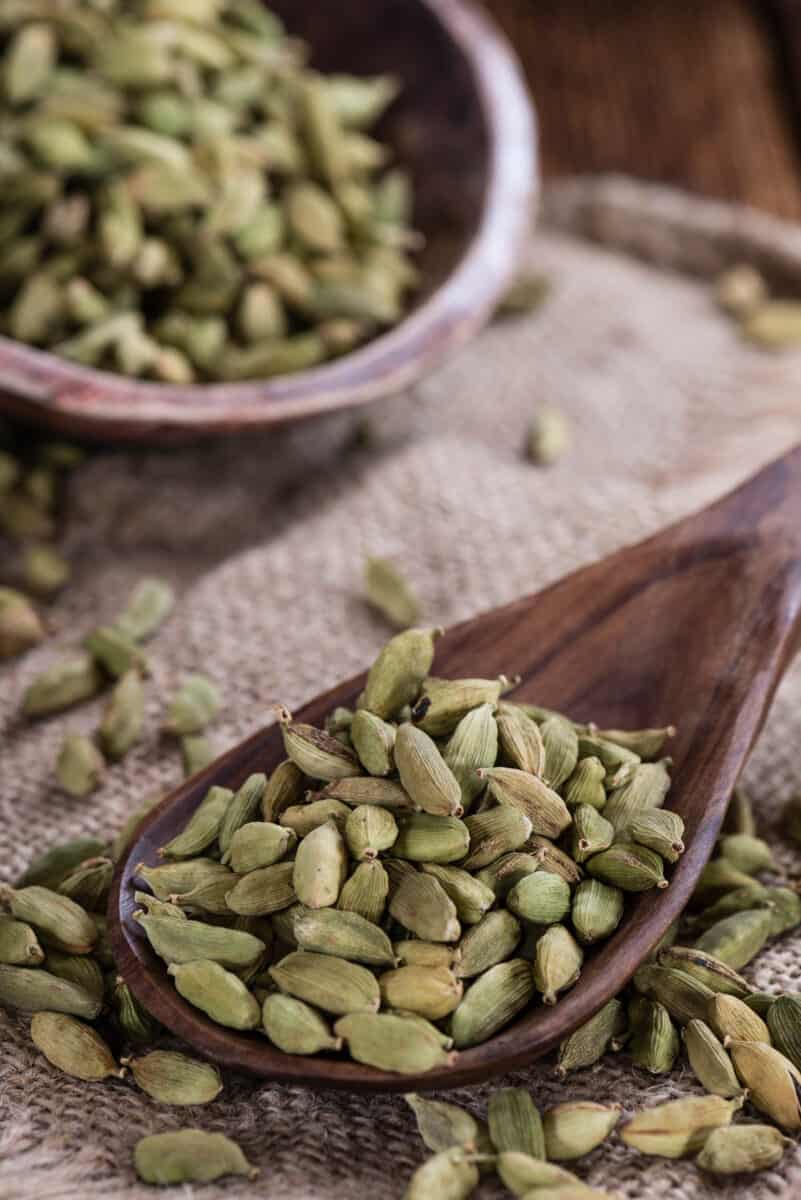
Jump to:
What is Cardamom?
Cardamom is a pod spice in the ginger family. The whole pods are made up of seed clusters with a thin outer shell. It comes either as a whole pod, shelled seeds or ground.
It is an expensive spice because it must be harvested by hand.
Cardamom’s complex flavor is often hard to describe because of its layers of rich tastes. If you had to deconstruct it, cardamom’s unique profile exhibits hints of mint, citrus, and slightly nutty flavors.
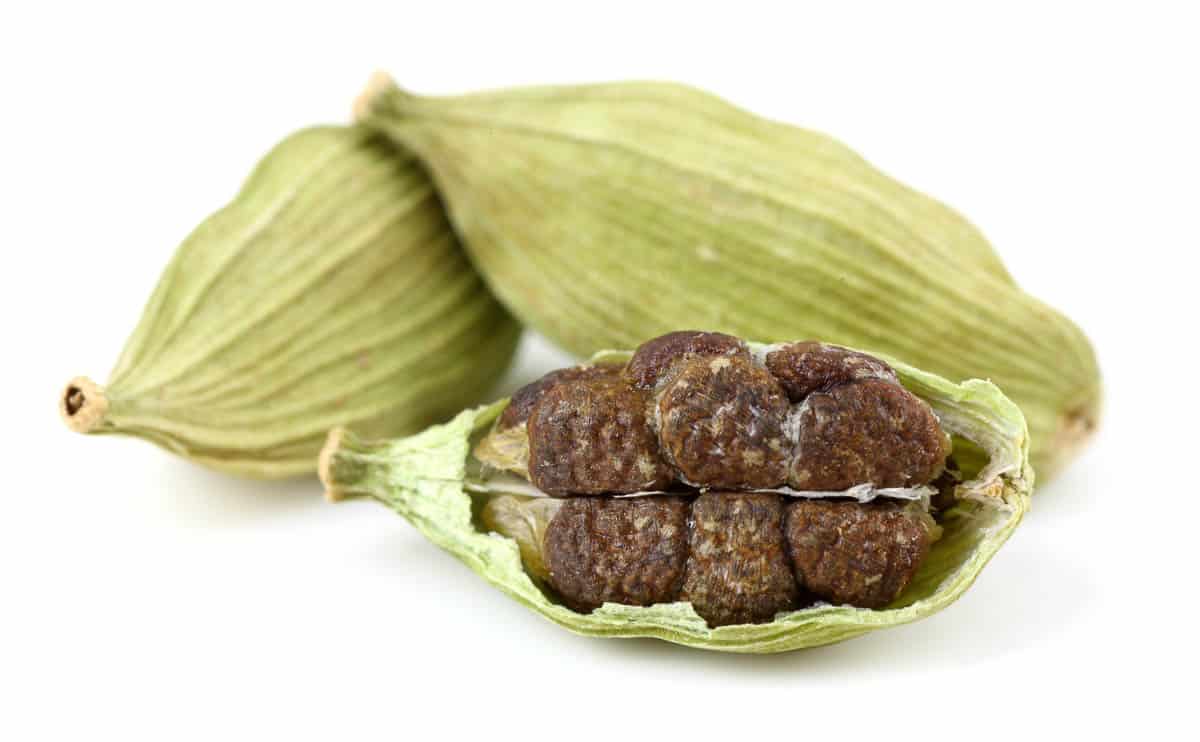
History
Cardamom, known as the Queen of Spices, has been around since ancient times. And when you think ancient, think Babylonians and Assyrians. Cardamom survived both empires and eventually became a popular medicinal spice in Greek and Roman culture.
Use and Flavor
Cardamom is used in Middle Eastern dishes, baked goods, teas, coffees, and a variety of other dishes. Indian spice blends contain cardamom, which tends to give things like basmati rice and Indian curry its signature flavor.
On the savory side, cardamom is used in Indian spices such as garam masala (a type of curry) and marinades, especially for meats like lamb. Cardamom is also used in savory soups, rubs (for meats), and masala chai tea.
Beyond India, cardamom is also used in Korean jeho-tang tea, which is a flavorful combination of unripe plums and sandalwood.
On the sweet side you will find cardamom in dishes like fruit pies, cookies, bread pudding, Swedish sweet buns, Finnish Pulla, and Julekaka, a Norwegian Christmas bread.
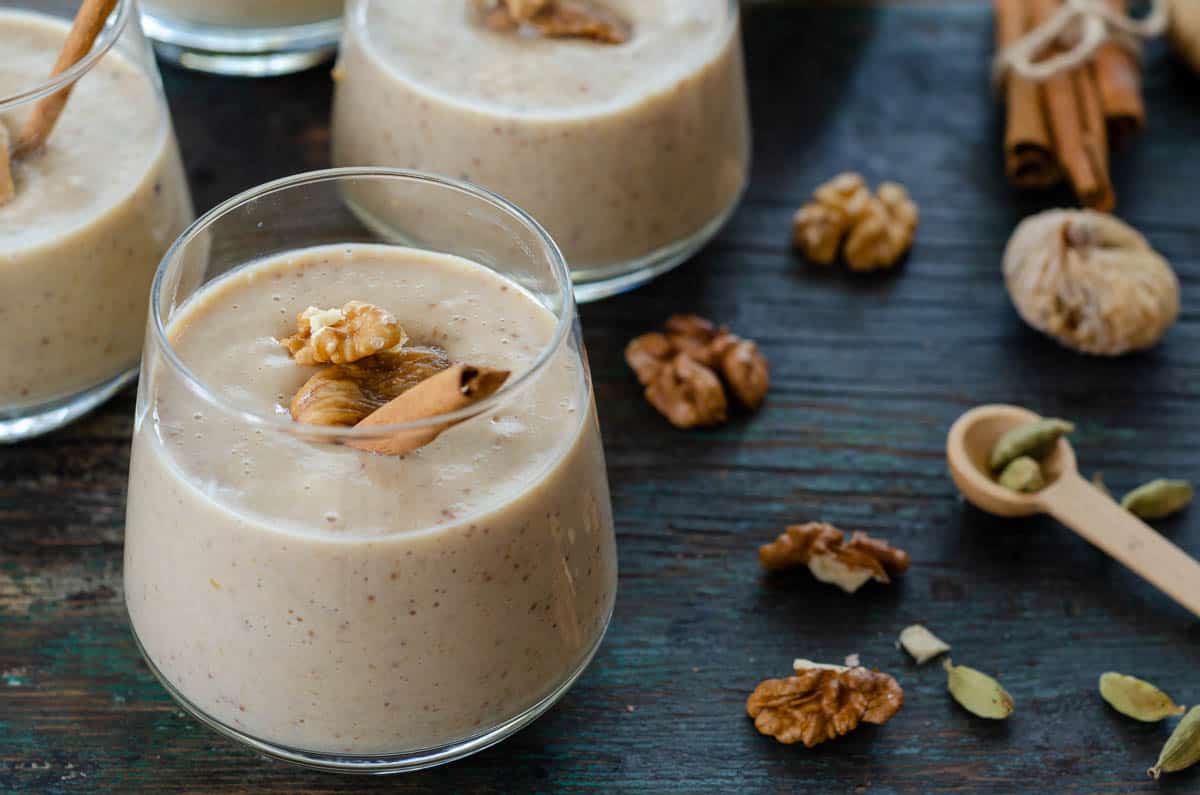
Where to Buy
Whole cardamom pods can be found in the spice aisle of most grocery stores, as well as at international or Indian markets.
It can also be purchased on Amazon, where the green pod variety is available for about $3 per ounce.
Green, Black, and White Cardamom
The 2 main types are green and black cardamom. Green is considered “true cardamom” and tastes like a combination of mint, eucalyptus and pepper with a more herbal warmth. The ground cardamom you see in the store’s spice aisle comes from this variety.
Black cardamom has a bark and smokey tone. Although strong, it is considered to have a more toned-down flavor compared to the green variety. Black cardamom is dried over an open fire, which creates its smoky taste. This is best used in savory dishes.
White cardamom is a type of green cardamom that has been bleached. As a result, the flavor is comparatively bland.
Unless you desire a light colored bread or batter, it is best to avoid the white cardamom. That said, you may see white cardamom in Central Asian and Chinese dishes as well as Scandinavian breads, cookies and other baked goods.
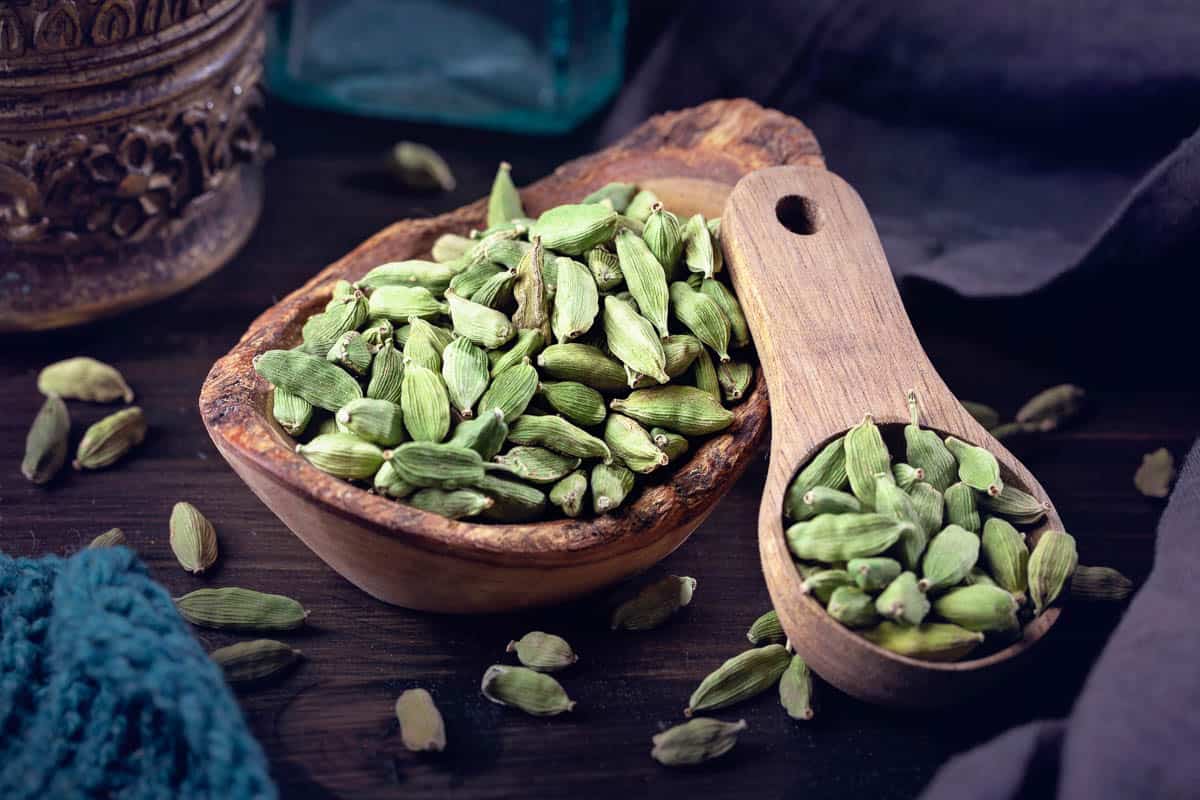
Tips for Substituting Different Types of Cardamom
There are a few simple tips to keep in mind when substituting one type of cardamom for another. They include:
- Green is most versatile. Use in sweet and/or savory dishes.
- White is like green, but more bland. Also can be used in sweet and/or savory dishes.
- Black has a smoky flavor that is best used with savory dishes only.
- Green’s versatility means it can be substituted for black, but black should never be substituted for green.
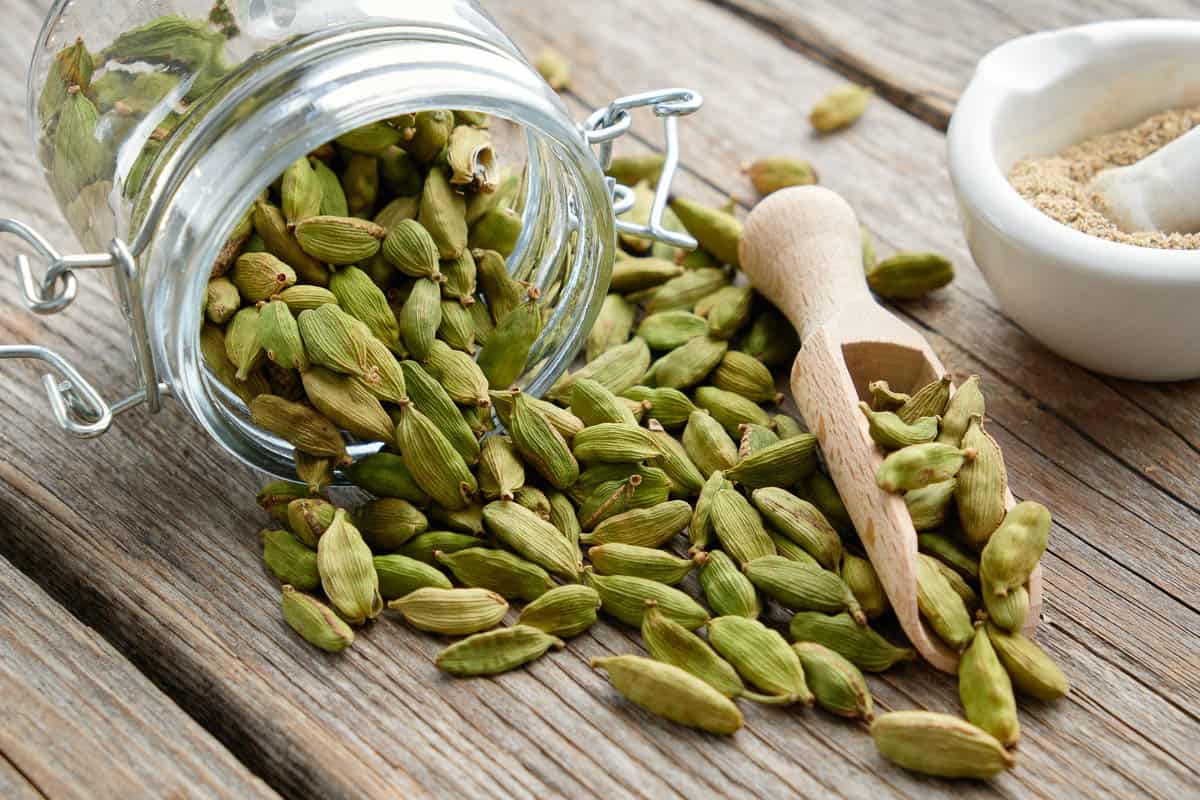
The Best Cardamom Substitutes
While there are no “perfect” substitutes for cardamom, there are spices that come very close when you find you need a quick replacement. The list of cardamom alternatives, which you more than likely have in your spice cabinet, include:
- Ginger
- Cinnamon
- Cloves
- Nutmeg
- Cumin
- Coriander seeds
- Galangal
Cardamom has a very layered and unique flavor, which is why the best substitutes involve blending a couple of spices together. The following list of cardamom alternatives begins with these blends, then explores “single spice” substitutions at the end.
Cinnamon and Cloves
Cinnamon is identical to the sweetness of cardamom even though it does not have the same taste. For this reason alone, cinnamon is among the best alternatives to cardamom.
However, add some cloves and you have a perfect combination for sweet and savory recipes. That’s because cloves have a similar flavor as well as comparable undertones to cardamom, which rounds out the cinnamon in this blend.
This combination works well in soups, broths and stew based dishes. Using a cinnamon and cloves blend is also good in meat and seafood dishes.
- Flavor Profile: Sweet, woody, slightly citrus flavor from cinnamon. Cloves add intense aroma and sweet, bitter, complex flavors.
- Substitution: Blend equal parts cinnamon and cloves. Substitute in a 1:1 ratio. For example, 1 teaspoon cinnamon and cloves for every 1 teaspoon cardamom.
- Special Notes: Great for sweet and savory dishes like soups, broths, stews, meats, and seafood. You can use cinnamon sticks and whole cloves the same as cardamom pods (e.g. by cooking with them, then removing and discarding after the recipe is cooked).
Ground cinnamon (powder) and ground or powdered cloves should be reserved for baked products such as cakes. In this scenario, maintain a 1:1 ratio just like above.
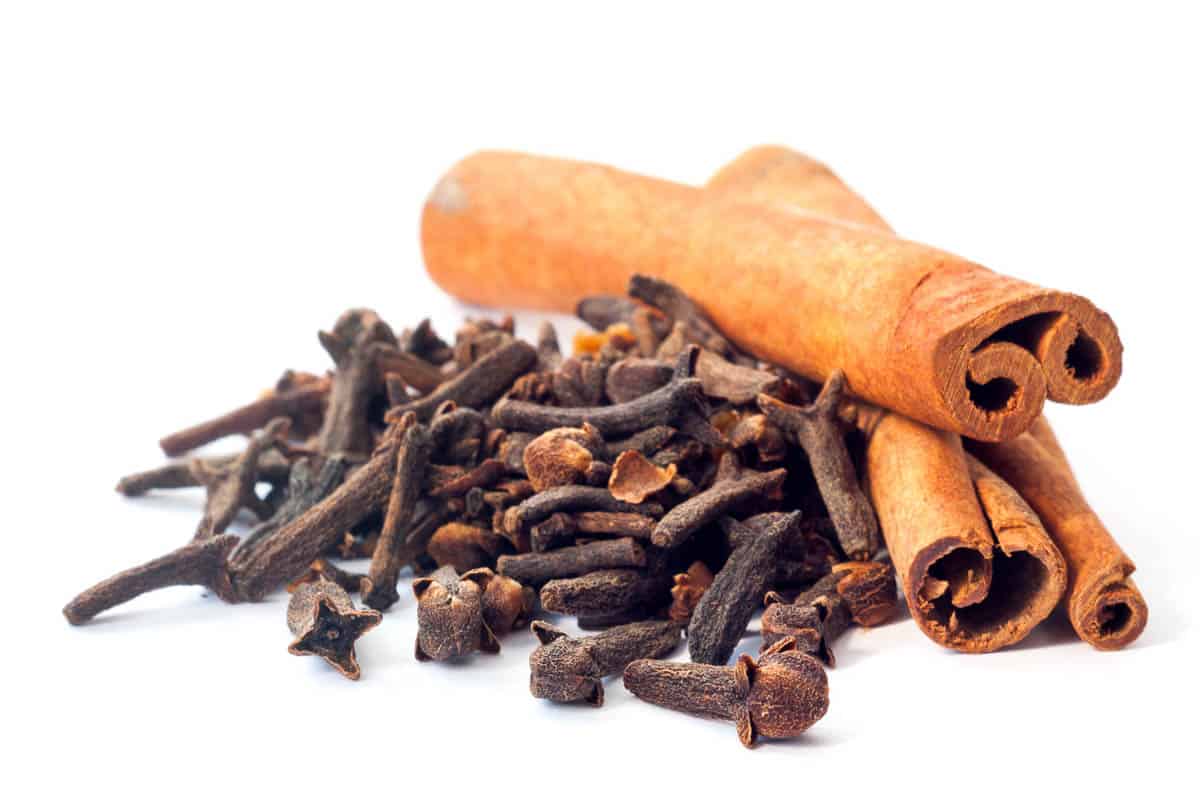
Cinnamon and Nutmeg
These two complement each other because of their sweetness. This substitute works well in baked recipes such as cakes, pies and pastries.
- Flavor Profile: Sweet, woody, slightly citrus flavor from cinnamon. Nutmeg adds a sweet and nutty touch.
- Substitution: Blend equal parts cinnamon and nutmeg. Substitute in a 1:1 ratio. For example, 1 teaspoon cinnamon and nutmeg for every 1 teaspoon cardamom.
- Special Notes: Ideal for cakes, pies and pastries. Remember to use powdered cinnamon and nutmeg when baking. Cinnamon sticks and whole nutmeg are better suited for stews, soups, and curries (recipes that allow for the whole bits to be strained out).
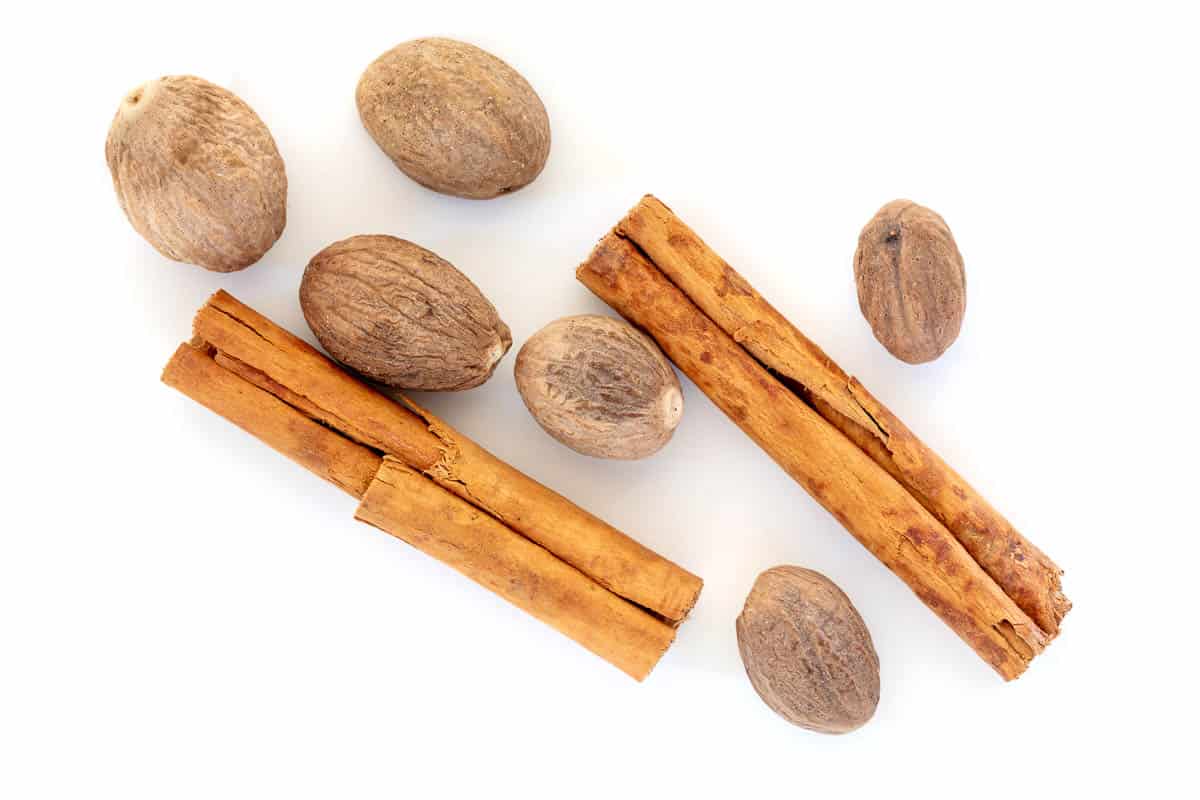
Cumin and Coriander
Cumin is a spice from the Cuminum cyminum plant, which is in the parsley family. This is another spice that dates back to ancient times.
The taste of cumin is warm and earthy with a bit of sweetness and bitterness. It is found in Indian cuisine, as well as Middle Eastern and Latin American dishes. Coriander refers to the dried seeds of the Cilantro plant. The taste is warm, spicy and nutty.
This combination is best used for spicy dishes such as curries, rice dishes, and meat recipes and not for sweet dishes.
- Flavor Profile: Warm, earthy, spicy, and nutty.
- Substitution: Blend equal parts cumin and coriander. Substitute in a 1:1 ratio. For example, 1 teaspoon cumin and coriander for every 1 teaspoon cardamom.
- Special Notes: Ideal for spicy dishes like curry, spicy fried rice, and meats. Not a good choice for sweet recipes.
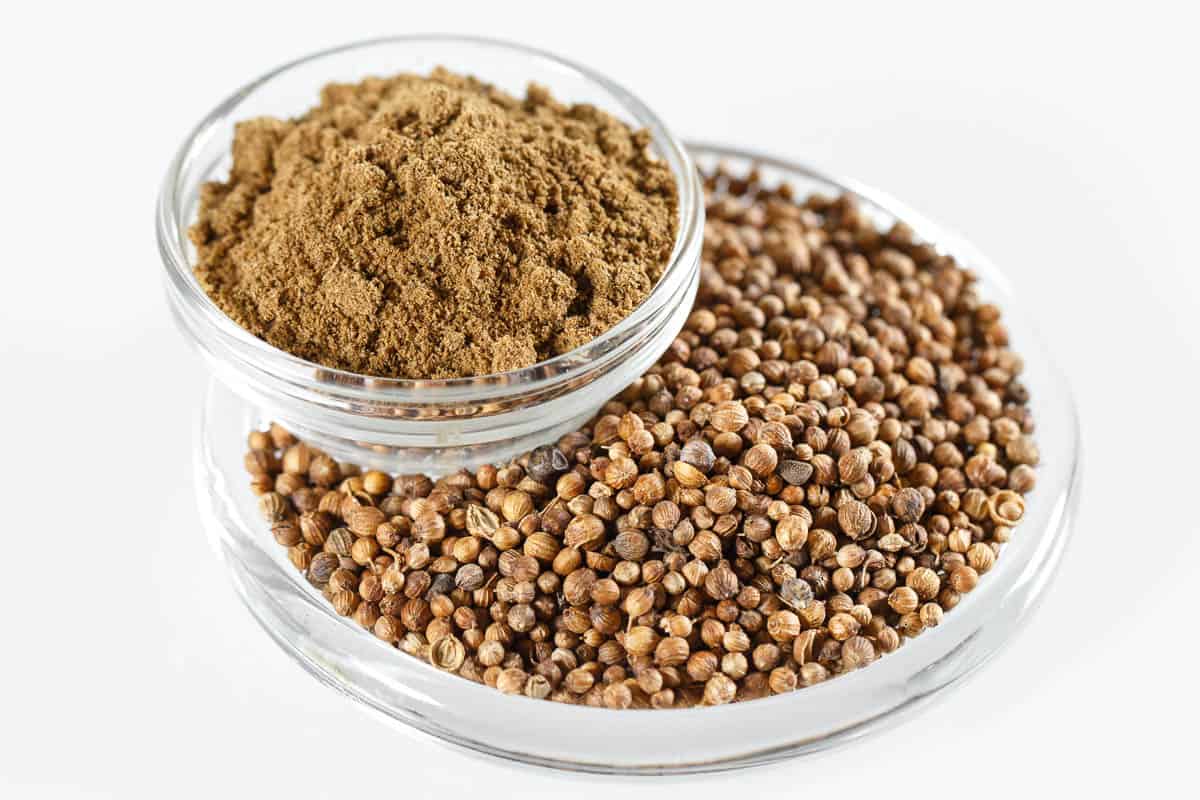
Ginger and Cinnamon
Ginger has the same spicy warmth and citrus flavor as cardamom, which makes it a sharp substitute. They are both in the ginger family, although ginger has a slightly sweeter taste.
Cinnamon also has a sweetness to it. For that reason, it is best to use a ginger and cinnamon blend as a substitute in sweet recipes.
- Flavor Profile: Sweet, woody, and warm with a slight citrus undertone.
- Substitution: Blend equal parts ginger and cinnamon. Substitute in a 1:1 ratio. For example, 1 teaspoon ginger and cinnamon for every 1 teaspoon cardamom.
- Special Notes: Keep in mind that using grated or chopped ginger will make those flavors more pronounced (warm, sweet, with a spicy flavor).
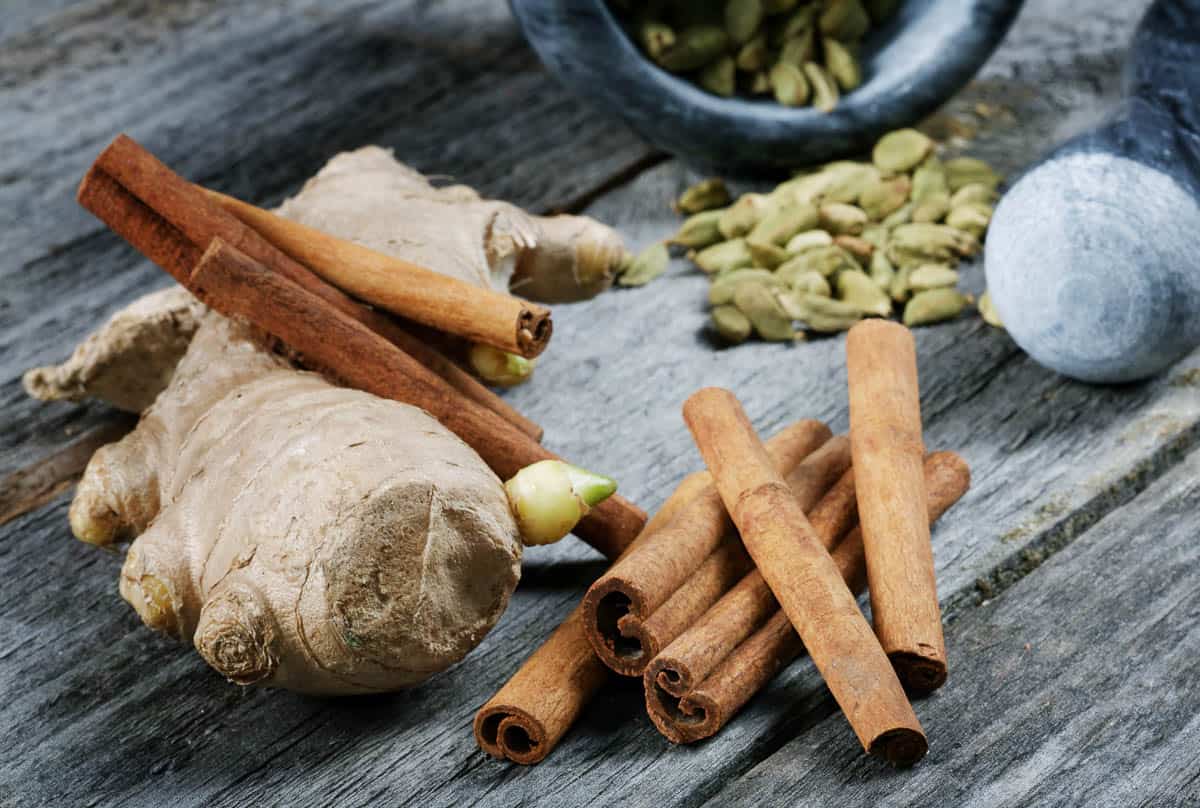
Allspice
Contrary to popular belief, allspice is not a blend of different spices. It is actually a single spice. The flavor, spicy, fruity with a citrus hint, is similar to that of cardamom and makes for a good substitution choice.
Allspice is the “fruit” (berries) from the Pimenta dioica plant. The Pimenta dioica is native to Central America, southern Mexico and the West Indies. It is also known as Jamaican pepper, myrtle, and pimenta.
The berries are picked just before they ripen. Traditionally, they are then sun dried until they turn a deep color. They resemble peppercorns once dried.
The name “allspice” refers to the spices natural cinnamon, nutmeg, and clove flavors. This versatile spice can be used in both sweet and savory dishes. But it is best in savory recipes such as meat dishes, fish, and curries when substituting.
- Flavor Profile: Sweet and savory, reminiscent of cinnamon, nutmeg, and clove combined.
- Substitution: Begin with ½ teaspoon total. Allspice is very powerful.
- Special Notes: Best for savory dishes like meats, fish, and curries. A little bit goes a long way, so start with just ½ teaspoon total and season to taste.
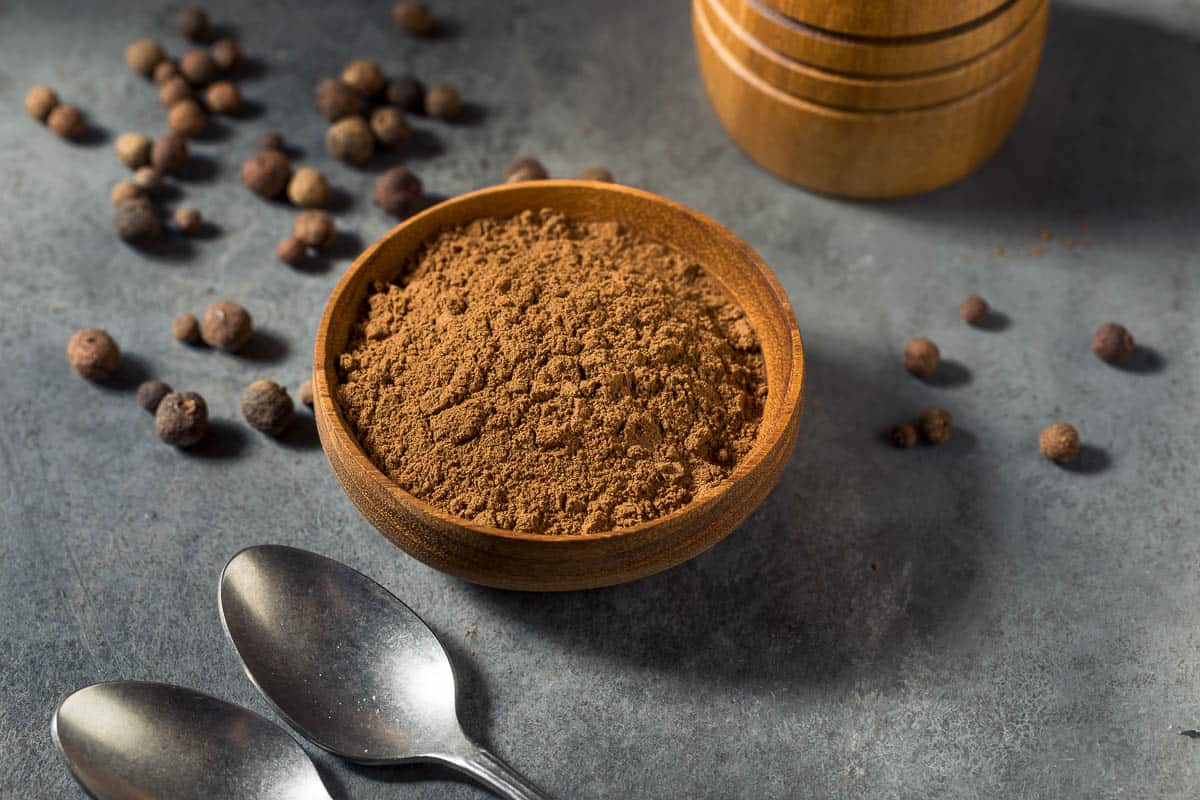
Cinnamon
When it comes to single spice alternatives to cardamom, cinnamon is among the most popular. The end result will be a little different flavor, yet still extremely similar to cardamom.
- Flavor Profile: Sweet, woody, and slightly citrus.
- Substitution: Use slightly less than 1:1 ratio. For example, substitute ¾ teaspoon cinnamon for each teaspoon cardamom.
- Special Notes: Cinnamon is among the best single spice alternatives to cardamom.
Nutmeg
Nutmeg has a sweet, mild, and nutty flavor. It can be used in sweet and savory dishes including baked products, soups, stews, beef dishes, vegetables, and puddings to name a few.
- Flavor Profile: Sweet and nutty.
- Substitution: Substitute in a 1:1 ratio. For example, 1 teaspoon nutmeg for every 1 teaspoon cardamom.
- Special Notes: Similar to cinnamon, but milder with a nuttier flavor. Can be used in both sweet and savory dishes.
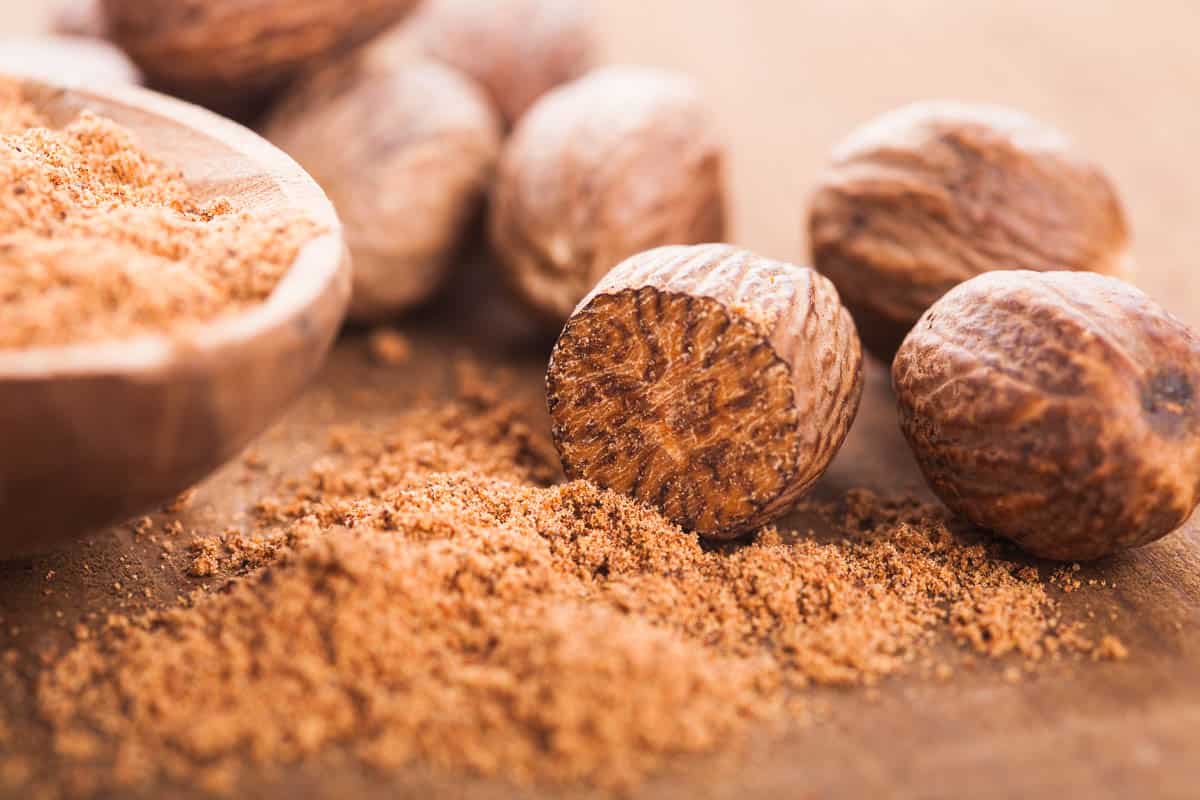
Cloves
Cloves have a strong flavor and are used in meats, stews, fish, curries, rice, pies, chai and mulled wines. It is a good substitute for cardamom, but many prefer the milder flavors of cinnamon, nutmeg, and the blends mentioned above.
- Flavor Profile: Strong and complex. Pungent, warm, sweet, and bitter.
- Substitution: Use slightly less than 1:1 ratio. For example, substitute ½ teaspoon cloves for each teaspoon cardamom.
- Special Notes: Strong flavor makes cloves an ideal cardamom alternative in meats, stews, fish, curries, and other bold dishes. Always start with less, then season to taste.
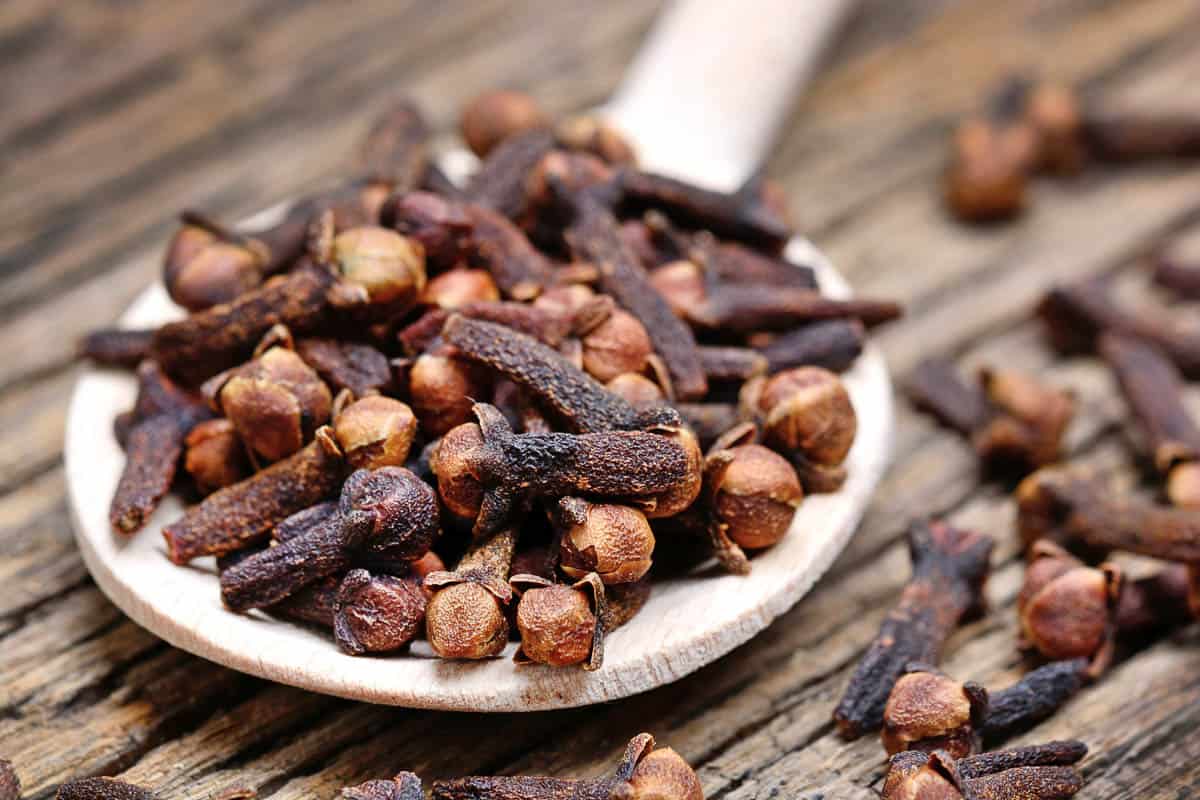
Galangal
Galangal is a cousin to ginger and turmeric. Commonly used in Ayurvedic and Traditional Chinese Medicine, galangal is sometimes referred to as ginger’s spicier cousin.
This root resembles ginger, but it is denser with a whiter flesh. It is native to southern Asia and is great in TomYum soup, satay sauce dishes, curries and stir fries.
- Flavor Profile: Similar to ginger, with peppery and sweeter flavor.
- Substitution: Use slightly less than 1:1 ratio. For example, substitute ½ teaspoon galangal for each teaspoon cardamom.
- Special Notes: Due to its flavor, galangal is a particularly good replacement for black cardamom.
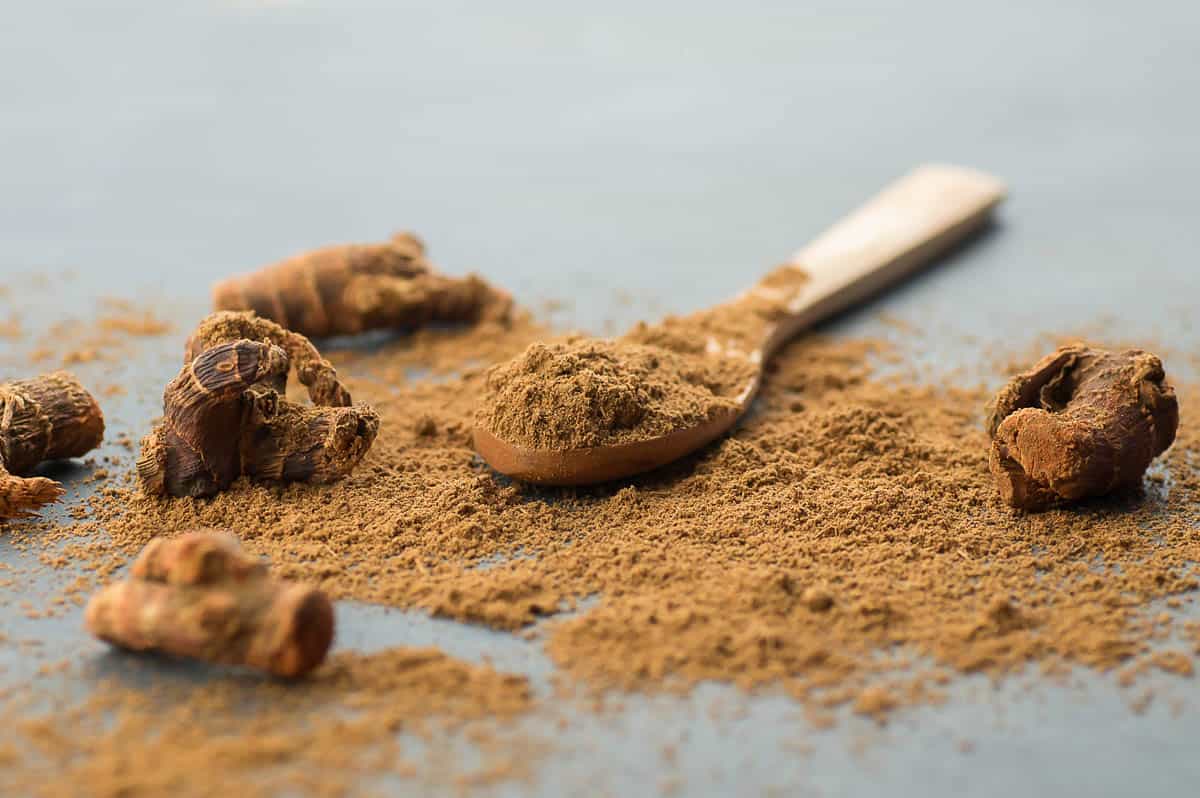
Yes, finding a spice substitute can be challenging. However, breaking things down by flavor and aroma can lead you to a delicious substitution you might never have imagined!
Enjoy these cardamom substitutes. Remember to pay particular attention to your recipe’s level of sweet vs. savory flavors, and choose your alternative accordingly.
Do you have any other tried and true substitution recommendations? Please let me know in the comments!



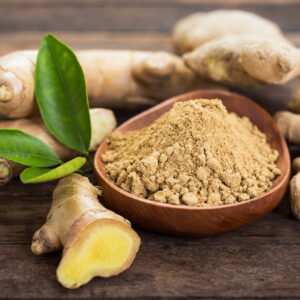
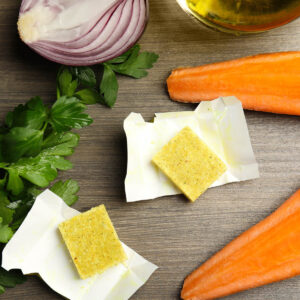
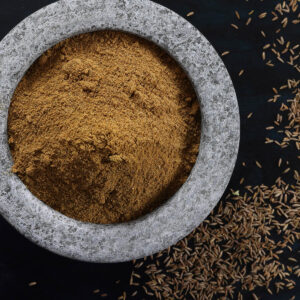
Leave a Reply